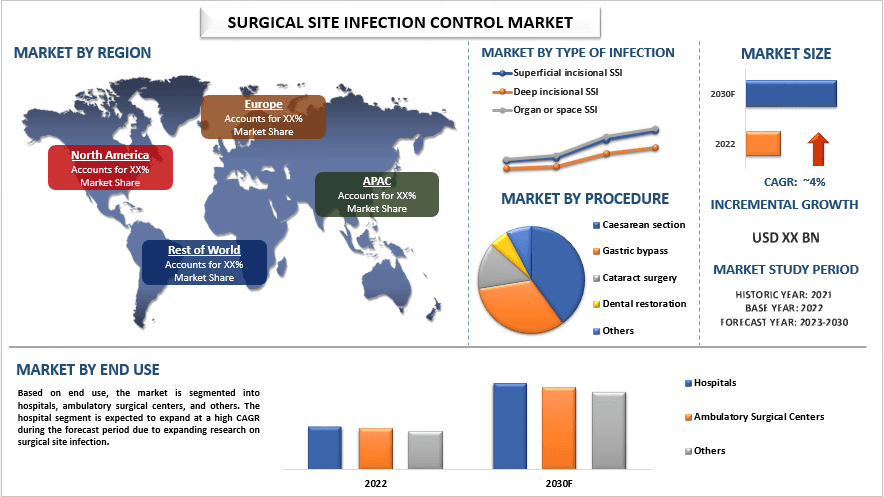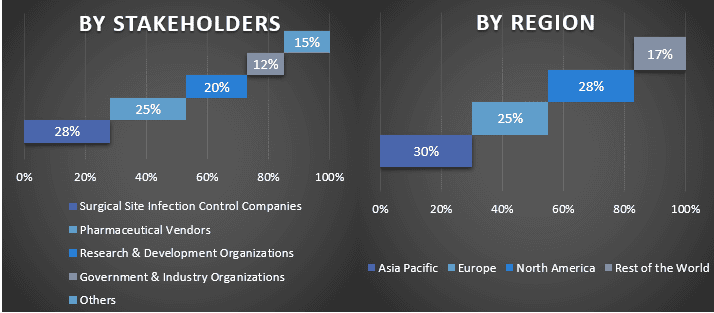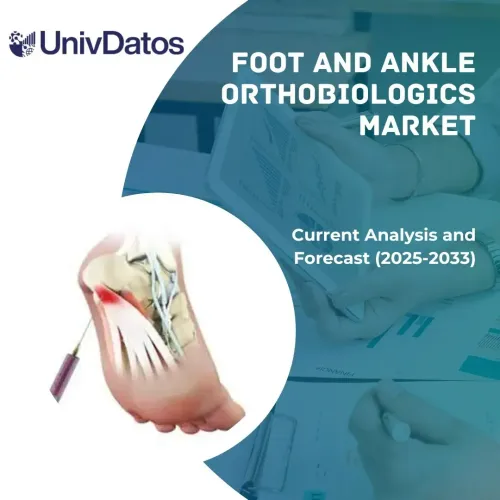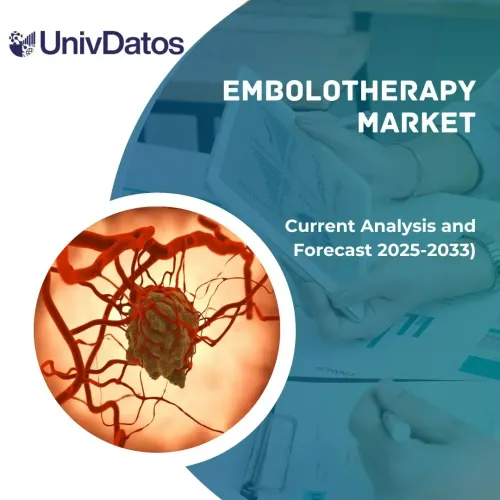- Home
- About Us
- Industry
- Services
- Reading
- Contact Us
Surgical Site Infection Control Market: Current Analysis and Forecast (2023-2030)
Emphasis on Type of Infection (Superficial incisional SSI, Deep incisional SSI, Organ or space SSI); Procedure (Caesarean section, Gastric bypass, Cataract surgery, Dental restoration, Others); Procedure (Skin preparation solution, Surgical scrubs, Hair clippers, Surgical irrigation, Surgical gloves, Surgical drapes, Manual reprocessors solution, Disinfectants, Medical nonwovens, Others); End Use (Hospitals, Ambulatory Surgical Centers, Others); and Region/Country

According to a new report by Univdatos Market Insights, Surgical site infection control market, is expected to reach USD 6 Billion in 2030 by growing at a CAGR of 4%. Surgical site infection occurs at the site of the incision where surgery is performed. Trending reports have established that there are growing cases of such kinds of infections. They are gaining prevalence owing to unhygienic and unsterilized ambiance post-surgical operations. Not only middle-income countries but also developed countries like the U.S. have reported rising cases of surgical site infections. This market is propelled by increasing awareness of hygiene and sanitation worldwide by governments of respective countries. Another influencing factor is increased surgical procedures throughout the globe. For example, the World Health Organization reported in June 2021 about a rise from around 7% of caesarean cases in 1990 to 21% in 2021. Evidently, caesarean cases have multiplied considering cases of past years owing to rising cases of preterm labor. These are the key factors that are creating opportunities for the market.
3M; Becton Dickinson, and Company; BioMérieux, SA; Getinge AB; Johnson & Johnson Limited; Sotera Health Company; Medtronic Private Limited; Prescient Surgical; GAMA Healthcare Ltd.; ANSELL LTD. are some of the key players in the market. Several M&As along with partnerships have been undertaken by these players to facilitate customers with hi-tech and innovative products/technologies.
Insights Presented in the Report
“Amongst type of infections, deep incisional SSI category to witness higher CAGR during the forecast period”
Based on the type of infection, the market is segmented into superficial incisional SSI, deep incisional SSI, and organ or space SSI. The deep incisional SSI is expected to grow with a high CAGR during the forecast period. Deep incisional SSI is the kind of infection that occurs below the incision area under the skin or muscle in the tissue region. They occur most commonly in 2nd week after surgery. They are more common with relatively high prevalence in diabetic, obese, and functionally dependent patients. Owing to the increased tendencies of sedentary lifestyles and unhealthy eating patterns, such patients are rising year by year. As per the World Obesity Atlas 2022, estimations are such that 1 billion people worldwide, comprising one in five women and one in seven men will be suffering from obesity by the year 2030. This proves the upcoming estimated rise in the deep incision SSI segment in the market.
“Amongst procedure, dental restoration to hold a significant share in the market in 2022”
Based on procedure, the market is categorized into the procedure, the market is categorized into caesarean section, gastric bypass, cataract surgery, dental restoration, and others. The dental restoration segment is expected to hold a significant share in the market in 2022 owing to a surge in the incidences of dental problems. The World Health Organization Global Oral Health Status Report in the year 2022 approximated that dental ailments affect approximately 3.5 billion people globally, with the maximum share of patients residing in middle-income nations. Apart from this, governments have been raising efforts and initiatives in dental-related research and development. For instance, the National Oral Health Program Division of the Ministry of Health and Family Welfare in India proposed National Oral Health Policy in February 2021 with the aim of providing a framework for promoting dental health. For instance, Hirawats launched technology integrated new performance scrubs with anti-bacterial technology in July 2021.
“Amongst products, the surgical scrubs and surgical drapes segment to hold a significant share in the market in 2022”
Based on product, the market is differentiated into skin preparation solutions, surgical scrubs, hair clippers, surgical irrigation, surgical gloves, surgical drapes, manual reprocessors solution, disinfectants, medical nonwovens, and others. The surgical scrubs and surgical drapes segment is expected to grow proportionately in this forecast period owing to the rising demand for minimally invasive surgeries. As per reports of Pediatric Surgery International in 2022, among all MIS procedures done merely 29% of MIS 2020 had little to more complications. There are huge investments by pharma giants for the development of sterilized surgical products.
“Amongst end use, Ambulatory Surgical Centers category to witness higher CAGR during the forecast period”
Based on end use, the market is segmented into hospitals, ambulatory surgical centers, and others. The ambulatory surgical centers segment is expected to expand at a high CAGR during the forecast period due to expanding clinical research on cancer and ablation therapies. Patients are more driven towards good quality of care and ambulatory surgical centers are more likely to satisfy those needs which is the epicenter of this market. Recently, Xenco Medical received FDA clearance for expanding its ambulatory surgery center device portfolio with the launch of its Multilevel CerviKit, which is a single-use lumbar surgical device. Evidently, in this forecast period, ambulatory surgical centers are estimated to grow at an exponential rate.
“APAC to hold a significant share in the forecast period”
In 2022, APAC held a significant share of the global surgical site infection control market. Several factors such as the wide range of applications of surgical site infection control technology in healthcare settings, and rising preference for minimally invasive surgeries are driving the market’s growth in developing countries like India and China during the forecast period. Evidently, China and India are among one of the leading companies in MedTech world. Lately, an Indian MedTech company, Healthium MedTech introduced an innovative surgical wound dressing equipped with patented infection prevention technology in October 2021. Noting the trending research & development, the increase in the geriatric population, also the cases of obesity and diabetes in these countries is also having a positive impact on the surgical site infection control market’s growth.
Reasons to buy this report:
- The study includes market sizing and forecasting analysis validated by authenticated key industry experts.
- The report presents a quick review of overall industry performance at one glance.
- The report covers an in-depth analysis of prominent industry peers with a primary focus on key business financials, product portfolio, expansion strategies, and recent developments.
- Detailed examination of drivers, restraints, key trends, and opportunities prevailing in the industry.
- The study comprehensively covers the market across different segments.
- Deep dive regional level analysis of the industry.
Customization Options:
The global surgical site infection control market can further be customized as per the requirement or any other market segment. Besides this, UMI understands that you may have your own business needs, hence feel free to connect with us to get a report that completely suits your requirements.
Table of Content
Research Methodology for the Surgical Site Infection Control Market Analysis (2023-2030)
Analyzing the historical market, estimating the current market, and forecasting the future market of the global surgical site infection control market were the three major steps undertaken to create and analyze the adoption of surgical site infection controls in major regions globally. Exhaustive secondary research was conducted to collect the historical market numbers and estimate the current market size. Secondly, to validate these insights, numerous findings and assumptions were taken into consideration. Moreover, exhaustive primary interviews were also conducted, with industry experts across the value chain of the global surgical site infection control market. Post assumption and validation of market numbers through primary interviews, we employed a top-down/bottom-up approach to forecasting the complete market size. Thereafter, market breakdown and data triangulation methods were adopted to estimate and analyze the market size of segments and sub-segments of the industry pertains to. Detailed methodology is explained below:
Analysis of Historical Market Size
Step 1: In-Depth Study of Secondary Sources:
Detail secondary study was conducted to obtain the historical market size of the surgical site infection control market through company internal sources such as annual reports & financial statements, performance presentations, press releases, etc., and external sources including journals, news & articles, government publications, competitor publications, sector reports, third-party database, and other credible publications.
Step 2: Market Segmentation:
After obtaining the historical market size of the surgical site infection control market, we conducted a detailed secondary analysis to gather historical market insights and share for different segments & sub-segments for major regions. Major segments are included in the report as type of infection, procedure, product, and end use. Further country-level analyses were conducted to evaluate the overall adoption of testing models in that region.
Step 3: Factor Analysis:
After acquiring the historical market size of different segments and sub-segments, we conducted a detailed factor analysis to estimate the current market size of the surgical site infection control market. Further, we conducted factor analysis using dependent and independent variables such as various type of infection, procedure, product, and end use of surgical site infection control. A thorough analysis was conducted for demand and supply-side scenarios considering top partnerships, mergers and acquisitions, business expansion, and product launches in the surgical site infection control market sector across the globe.
Current Market Size Estimate & Forecast
Current Market Sizing: Based on actionable insights from the above 3 steps, we arrived at the current market size, key players in the global surgical site infection control market, and market shares of the segments. All the required percentage shares split, and market breakdowns were determined using the above-mentioned secondary approach and were verified through primary interviews.
Estimation & Forecasting: For market estimation and forecast, weights were assigned to different factors including drivers & trends, restraints, and opportunities available for the stakeholders. After analyzing these factors, relevant forecasting techniques i.e., the top-down/bottom-up approach were applied to arrive at the market forecast for 2030 for different segments and sub-segments across the major markets globally. The research methodology adopted to estimate the market size encompasses:
- The industry’s market size, in terms of revenue (USD) and the adoption rate of the surgical site infection control market across the major markets domestically
- All percentage shares, splits, and breakdowns of market segments and sub-segments
- Key players in the global surgical site infection control market in terms of products offered. Also, the growth strategies adopted by these players to compete in the fast-growing market
Market Size and Share Validation
Primary Research: In-depth interviews were conducted with the Key Opinion Leaders (KOLs) including Top Level Executives (CXO/VPs, Sales Head, Marketing Head, Operational Head, Regional Head, Country Head, etc.) across major regions. Primary research findings were then summarized, and statistical analysis was performed to prove the stated hypothesis. Inputs from primary research were consolidated with secondary findings, hence turning information into actionable insights.
Split of Primary Participants in Different Regions

Market Engineering
The data triangulation technique was employed to complete the overall market estimation and to arrive at precise statistical numbers for each segment and sub-segment of the global surgical site infection control market. Data was split into several segments & sub-segments post studying various parameters and trends in the areas- type of infection, procedure, product, and end use in the global surgical site infection control market.
The main objective of the Global Surgical Site Infection Control Market Study
The current & future market trends of the global surgical site infection control market were pinpointed in the study. Investors can gain strategic insights to base their discretion for investments on the qualitative and quantitative analysis performed in the study. Current and future market trends determined the overall attractiveness of the market at a regional level, providing a platform for the industrial participant to exploit the untapped market to benefit from a first-mover advantage. Other quantitative goals of the studies include:
- Analyze the current and forecast market size of the surgical site infection control market in terms of value (USD). Also, analyze the current and forecast market size of different segments and sub-segments
- Segments in the study include areas of types of infection, procedure, product and distribution channel
- Define and analysis of the regulatory framework for the surgical site infection control industry.
- Analyze the value chain involved with the presence of various intermediaries, along with analyzing customer and competitor behaviors of the industry.
- Analyze the current and forecast market size of the surgical site infection control market for the major region.
- Major countries of regions studied in the report include Asia Pacific, Europe, North America, and the Rest of the World.
- Company profiles of the surgical site infection control market and the growth strategies adopted by the market players to sustain in the fast-growing market
- Deep dive regional level analysis of the industry
Related Reports
Customers who bought this item also bought










